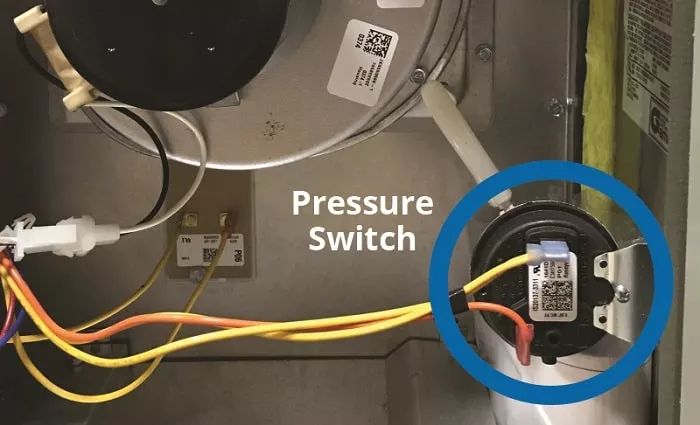Because a furnace can fail, leading to hazardous results, they come with safety features to prevent and detect these failures. One of these built-in safety features is a pressure switch. Here we answer basic questions about what, where, and how a furnace is and does. Understanding your heating and cooling setup is vital to getting the most out of it. Let’s start with the basics.
What Is a Pressure Switch?
The pressure switch is a safety feature on a gas furnace that saves lives.
What Does a Furnace Pressure Switch Do?
It prevents your furnace from disseminating harmful exhaust fumes via backdraft and cycling if it is experiencing mechanical failure. It operates by sensing negative pressure coming from the draft inducer and reacts by shutting down the furnace. This mechanism also safeguards against gas leaks.
Where Is the Pressure Switch On a Furnace?

It should be located near the blower motor.
What Happens When a Pressure Switch Goes Bad?
If you have a bad pressure switch, then your furnace will not startup. There are a few different sources to consider creating the problem. Check for a clogged hose port or a cracked hose between the draft inducer motor and pressure switch. Another culprit to look out for is a compromised diaphragm. It simply may be jamming because of too much dirt and dust buildup. Lastly, your pressure switch may be simply too old.
Save On HVAC Switches at PlumbersStock
Now that you know the basics be sure to browse through our selection of pressure switches. In fact, we carry all kinds of HVAC switches, as well as a huge inventory of HVAC parts. Did you know that you can find member pricing here on certain items (typically name brand, MAP priced items) if you log in? For industry professionals buying in bulk, please consider contacting us directly for extra special pricing and extra savings.
Related resources:
How to Replace Pressure Switch
Furnace Pressure Switch Stuck Closed/Open
Bypassing a Pressure Switch
What Is a Limit Switch?
All Furnace Tutorials and FAQ's



